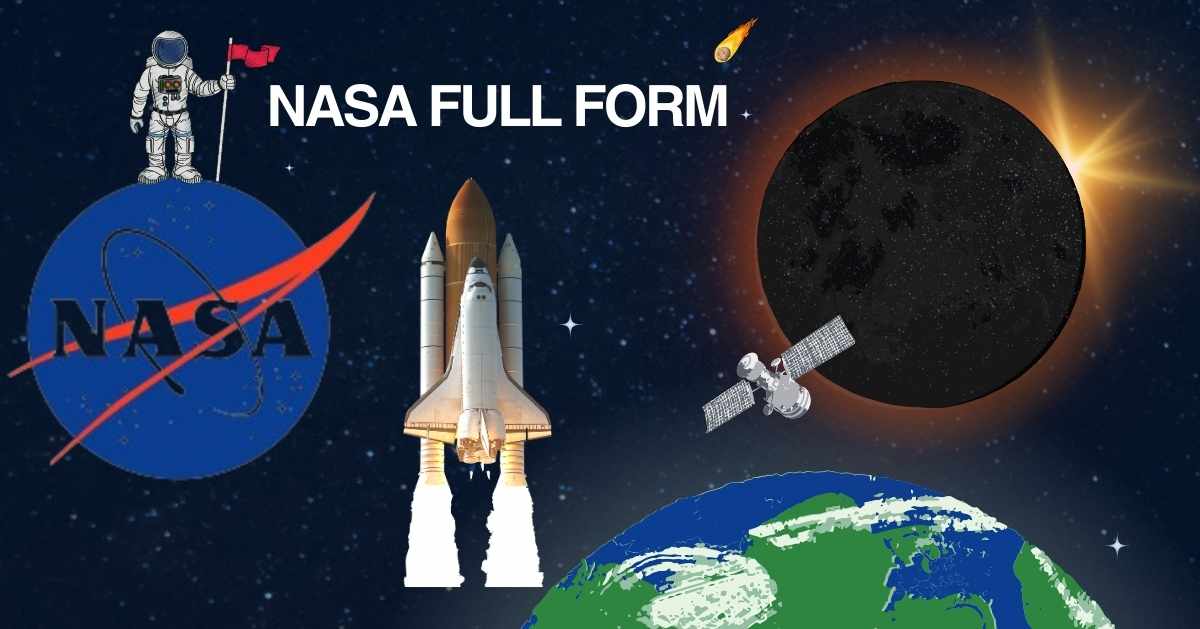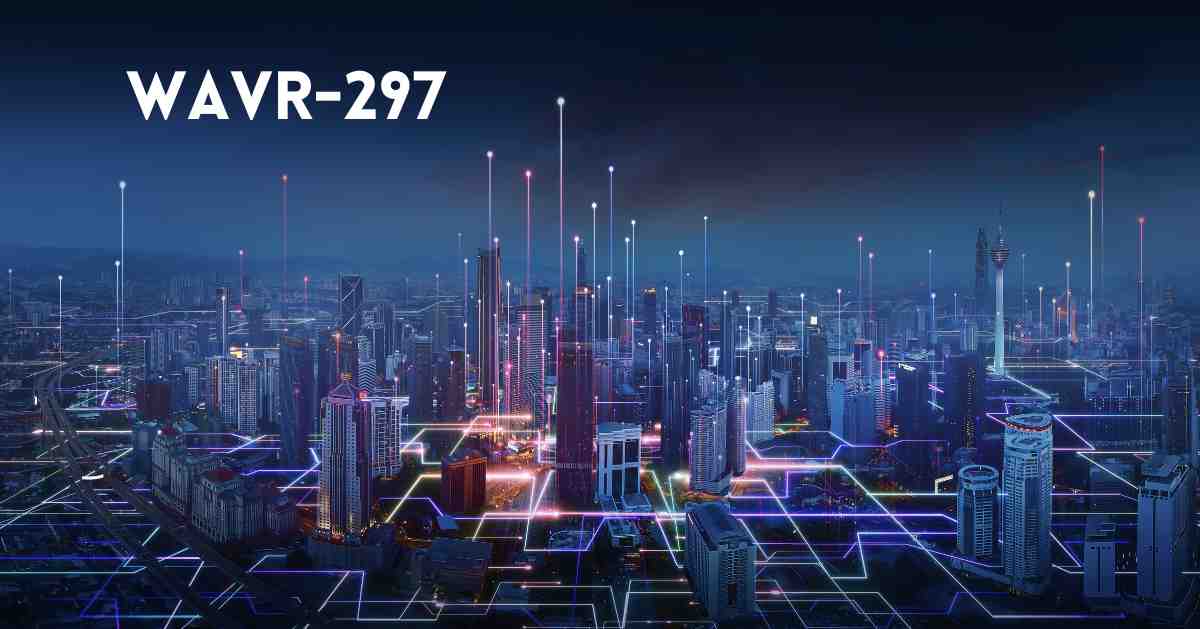NASA Full Form NASA, the National Aeronautics and Space Administration, is an independent agency of the U.S. federal government responsible for advancing civil space exploration, aeronautics research, and space science. Established on 1 October 1958 under President Dwight D. Eisenhower, NASA succeeded the National Advisory Committee for Aeronautics (NACA). Emphasizing peaceful applications in space science, NASA oversees the development of key spacecraft such as Orion and the Space Launch System, facilitates commercial crew missions, and supports international collaborations like the International Space Station (ISS).
What is NASA?
NASA Full Form stands for the National Aeronautics and Space Administration. It’s based in Washington, DC, and oversees ten field centres. The NASA administrator is chosen by the President and confirmed by the Senate. Most NASA employees must be US citizens unless there are special circumstances.
Where Is NASA?
NASA’s main office is in Washington, D.C. There are 10 NASA centers and seven smaller workplaces across the United States where they test and study Earth and space. Thousands of people work for NASA. While astronauts are the most famous employees, NASA also has many engineers, scientists, secretaries, writers, lawyers, and teachers.
What Does NASA Do?
NASA does many important things:
Makes Satellites: These help scientists learn more about Earth.
Sends Probes into Space: These study our solar system and beyond.
Human Exploration: Plans to send people to the Moon and Mars.
Shares Knowledge: NASA shares what they learn to help others invent new things that can make life better on Earth.
NASA Vision
NASA’s vision is to explore space and expand our knowledge for the benefit of humanity.
Leadership
NASA is managed by an administrator. Jim Bridenstine became the 13th administrator in July 2019. James W. Morhard is the 14th Deputy Administrator.
Research Divisions
NASA has four main areas of research, each with a specific focus:
- Aeronautics Research: This division works on improving aviation technology, making flying safer and more efficient.
- Science: The science division is responsible for studying the universe, our solar system, and Earth. They aim to understand how these systems work and how they came to be.
- Space Technology: This division develops new technologies for space research and exploration. Their goal is to create innovative tools and methods to help us explore space more effectively.
- Human Exploration and Operations: This division manages missions that involve astronauts, such as those to the International Space Station. They also manage space travel and communication for both crewed and robotic missions.
Research Centers
NASA operates several key research centres across the United States:
- Goddard Space Flight Center in Greenbelt, Maryland: Focuses on Earth and space science.
- Jet Propulsion Laboratory in Pasadena, California: Specializes in robotic space exploration.
- Johnson Space Center in Houston, Texas: Manages astronaut training and human spaceflight missions.
- Langley Research Center in Hampton, Virginia: Conducts aeronautics and space research.
- NASA’s headquarters is located in Washington, D.C.
[Read More: GPS Full Form]
Space Flight Programs
Throughout its history, NASA has conducted many missions, both crewed and uncrewed.
Crewed Programs:
- X-15 Rocket Plane (1959-1968): Tested rocket planes and gathered valuable data for future space missions.
- Project Mercury (1958-1963): Sent the first American astronauts into space and tested the capabilities of humans to survive in space.
- Project Gemini (1961-1966): Developed skills and technology needed for moon missions, including spacewalks and orbital rendezvous.
- Apollo Program (1961-1972): Achieved the first human moon landings and conducted extensive exploration of the lunar surface.
- Skylab (1965-1979): Launched America’s first space station and conducted scientific research in space.
- Apollo-Soyuz Test Project (1972-1975): Marked the first international human spaceflight mission, with American and Soviet astronauts working together.
- Space Shuttle Program (1972-2011): Flew reusable space shuttles that carried astronauts and cargo to space. Enabled significant achievements like building the International Space Station.
- International Space Station (1993-present): A long-term space habitat where astronauts from various countries live and conduct scientific research.
Uncrewed Programs:
- Explorer 1: Launched in 1958, it was the first U.S. satellite, providing critical data about Earth’s radiation belts.
- Pioneer 10: Launched in 1973, it was the first spacecraft to travel through the asteroid belt and visit Jupiter.
- Pioneer 11: Launched in 1979, it was the first spacecraft to visit Saturn.
- Voyager 2: Launched in 1977, it became the first spacecraft to visit Uranus in 1986 and Neptune in 1989.
Key Events and Missions
- 2009 Moon Mission: In 2009, NASA sent astronauts back to the Moon, marking the 40th anniversary of the first lunar landing. They began building the Neil A. Armstrong Lunar Outpost, which was completed in 2012.
- Asteroid Landing: In 2015, NASA successfully landed astronauts on the asteroid AO10, which was discovered in 1999.
- Mars Mission Proposal: NASA has proposed a crewed mission to Mars that could take place around 2020 or 2021.
- Venus In Situ Explorer: An upcoming uncrewed mission planned to launch in 2022, designed to study the surface and atmosphere of Venus.
- Uranus Pathfinder and Neptune Orbiter: NASA, in collaboration with the European Space Agency (ESA), plans to launch the Uranus Pathfinder in 2025. The Neptune Orbiter was launched in 2016 to explore Neptune and its moons.
NASA continues to push the boundaries of space exploration, aiming to discover more about our universe and improve life on Earth.
Conclusion
NASA Full Form NASA, the National Aeronautics and Space Administration, plays a pivotal role in advancing space exploration, aeronautics research, and scientific discoveries. From sending satellites and probes into space to planning missions to the Moon and Mars, NASA continues to inspire and innovate, expanding humanity’s understanding of the cosmos.





